
In the late 1480s, religious images of an intimate, chamber plan were replaced in the works of Botticelli by large-scale compositions, as if addressed to a more mass audience. If in 1484-1489 Botticelli seems to be content with himself and serenely experiencing a period of glory and skill, the “San Marco Altar” indicates already a confusion of feelings, of new worries and hopes. The power of the impact of this painting is largely due to the interpretation of the heavenly vision, full of religious symbolic motifs with an apocalyptic coloring. They are inspired by the sermons of Savonarola in Florence, which soon led to a political coup that ended with the expulsion of the Medici in 1494.
In the solution of the problems, now there are more and more intonations, it is filled with a sharp dramatic sound. The very format of Sandro’s works of this period on religious motives is of an enlarged character, which gives them new significance. A typical example of this type of composition is the altar of San Marco, one of the most striking works of Botticelli.
The Florentine Guild of jewelers was responsible for the maintenance and decoration of the Dominican church of San Marco, one of the chapels of the church was dedicated to their patron Saint Eligius. The altarpiece “The coronation of Mary with the angels, the Evangelist John and Saint Augustine, Jerome and Eligius”, known as the altar of San Marco, painted by Botticelli around 1488-1492, was intended for this chapel. The fact that the altar image was ordered by jewelers explains the use of a large amount of gold in this work. The golden background at the top of the picture delineates the celestial and earthly world, however, they nevertheless come into contact in the space of the picture, this interpretation was unusual for the works of that time.
The central part of the altar is marked by archaic features: the figures of angels and saints differ sharply in scale; a fantastic niche in which the coronation scene is enclosed, contrasts with a more realistic interpretation of the spatial environment of the four main characters. Surrounded by jubilant angels, God the Father and the Mother of God are seated on the heavenly thrones, beneath their feet is a carpet of clouds. Botticelli skillfully inscribes the heavenly radiance from their figures in the semicircular upper part of the picture, which is consistent with the dome-shaped architecture of the chapel.
Four monumental figures of the saints settled in a semicircle on a meadow, against a background of a landscape with a lake and hilly banks. The Apostle John, the author of the Gospel, the Epistles and the Apocalypse, portrayed with the book open up, appears in the composition as a mediator between contemplatives of the vision and the fantastic crookedness of the angels around the rainbow arch of the cherub and the seraphim edging the scene of the coronation of Mary. The appearance of angels against the background of golden rays, in a dazzling radiance, among the rain of roses and the earthly landscape with its rocks and the deserted meadow on which the saints stand, seem to emphasize the contrast between the phantasmagoric appealing celestial reality and the hardships of the material world.
In the depiction of the angels there is much excitement, the oath of St. Jerome breathes with confidence and dignity. At the same time, there is a certain departure from the “perfection of proportions.” Increases in tension, incidentally, exclusively to the inner world of the characters and therefore not devoid of grandeur, intensifies the sharpness of the color, becoming increasingly independent of chiaroscuro.
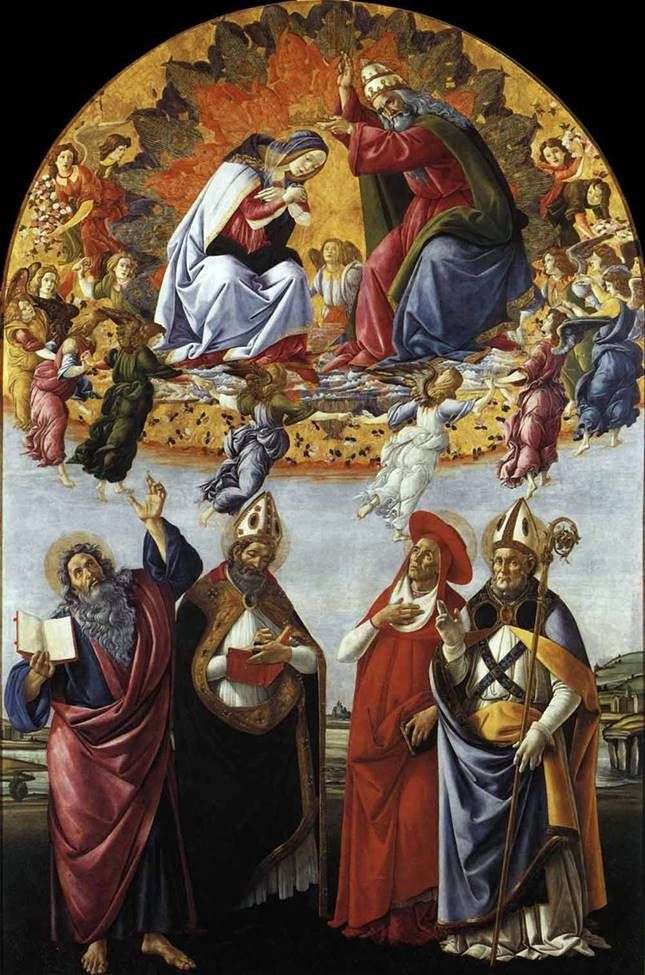 The Coronation of Mary by Sandro Botticelli
The Coronation of Mary by Sandro Botticelli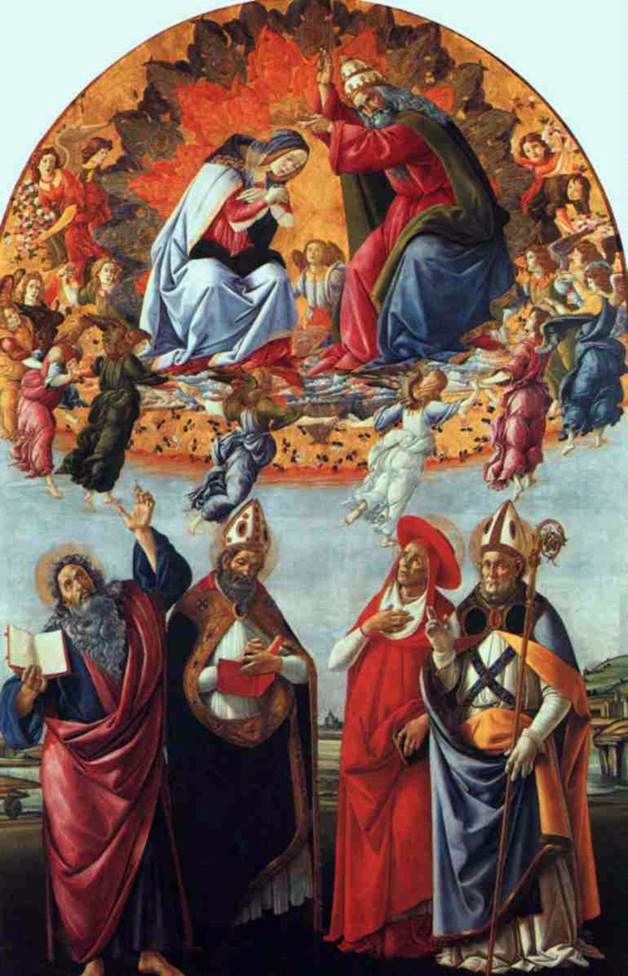 Autel de San Marco, ou le couronnement de Marie avec les anges, l’évangéliste Jean et les saints Augustin, Jérôme et Eligius – Sandro Botticelli
Autel de San Marco, ou le couronnement de Marie avec les anges, l’évangéliste Jean et les saints Augustin, Jérôme et Eligius – Sandro Botticelli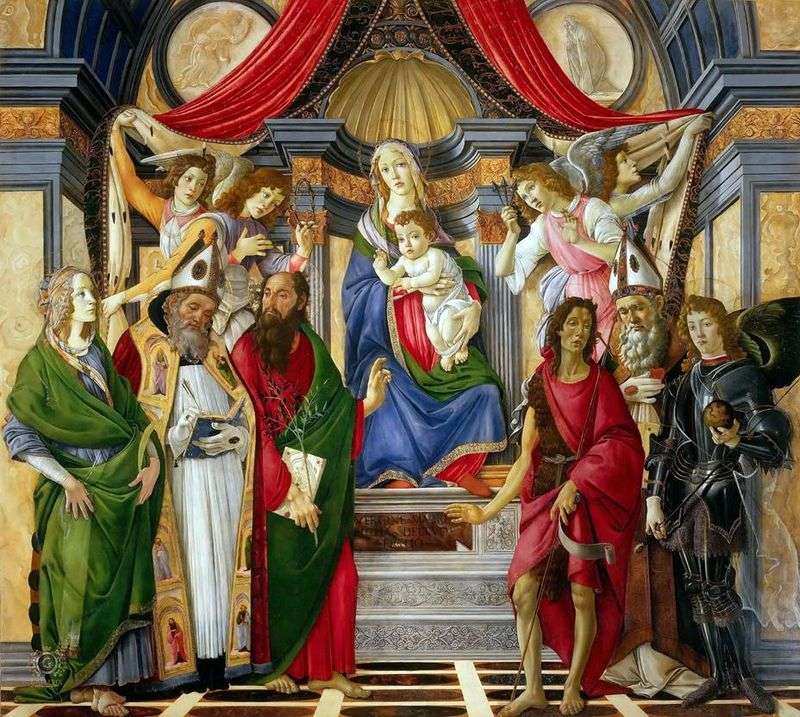 The Altar of St. Barnaby by Sandro Botticelli
The Altar of St. Barnaby by Sandro Botticelli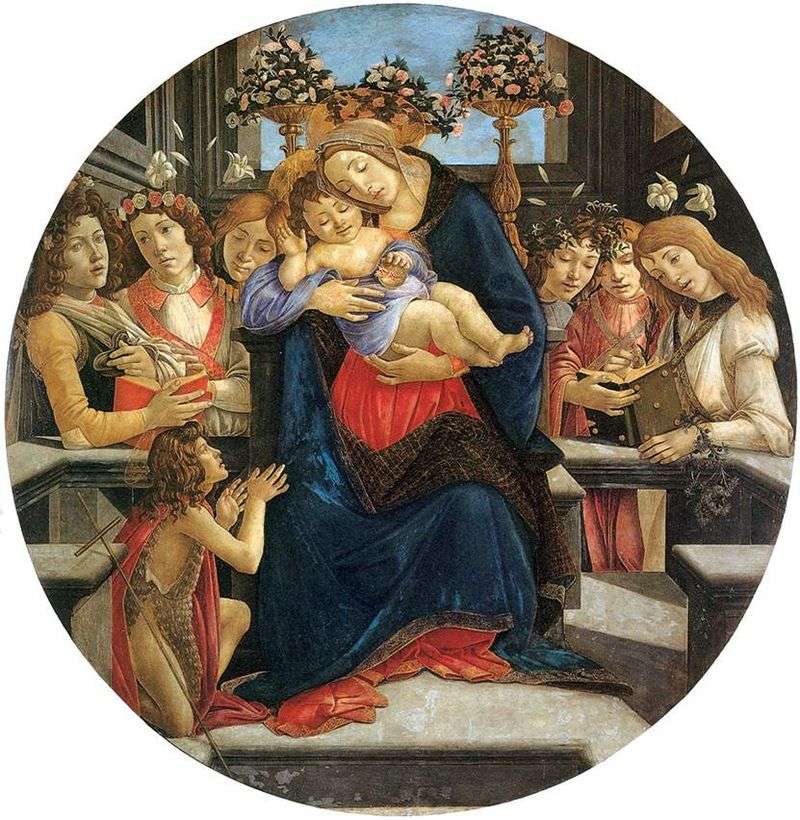 Madonna with Child, Angels and Saint John the Baptist by Sandro Botticelli
Madonna with Child, Angels and Saint John the Baptist by Sandro Botticelli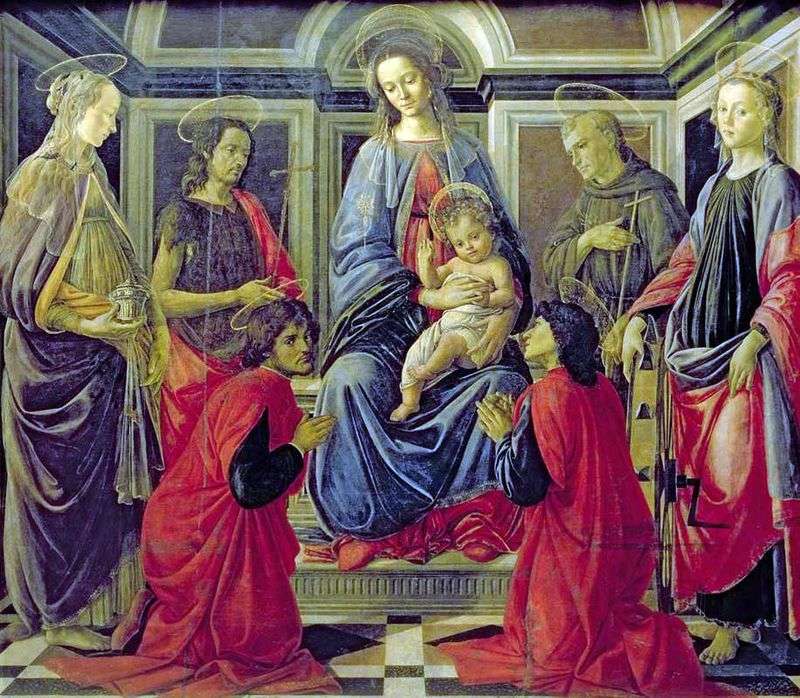 Madonna with the Child and Saints Mary Magdalene, John the Baptist, Kozma, Damian, Francis of Assisi and Catherine of Alexandria by Sandro Botticelli
Madonna with the Child and Saints Mary Magdalene, John the Baptist, Kozma, Damian, Francis of Assisi and Catherine of Alexandria by Sandro Botticelli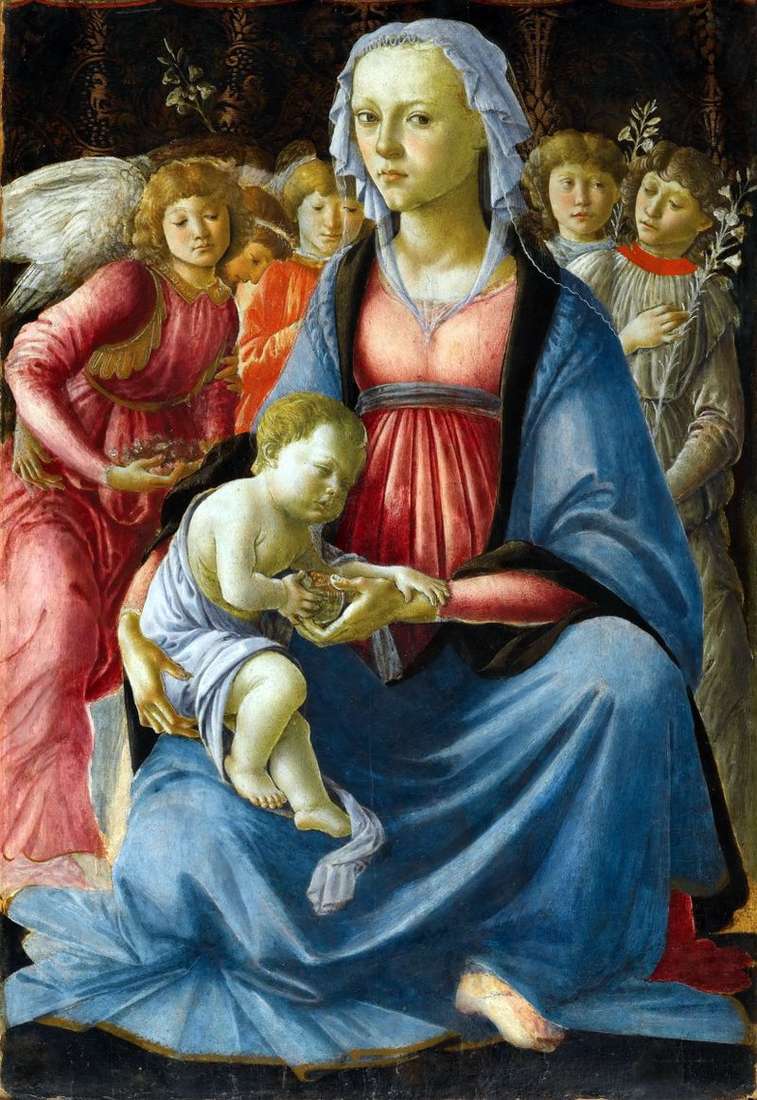 Madonna with the Child and the Five Angels by Sandro Botticelli
Madonna with the Child and the Five Angels by Sandro Botticelli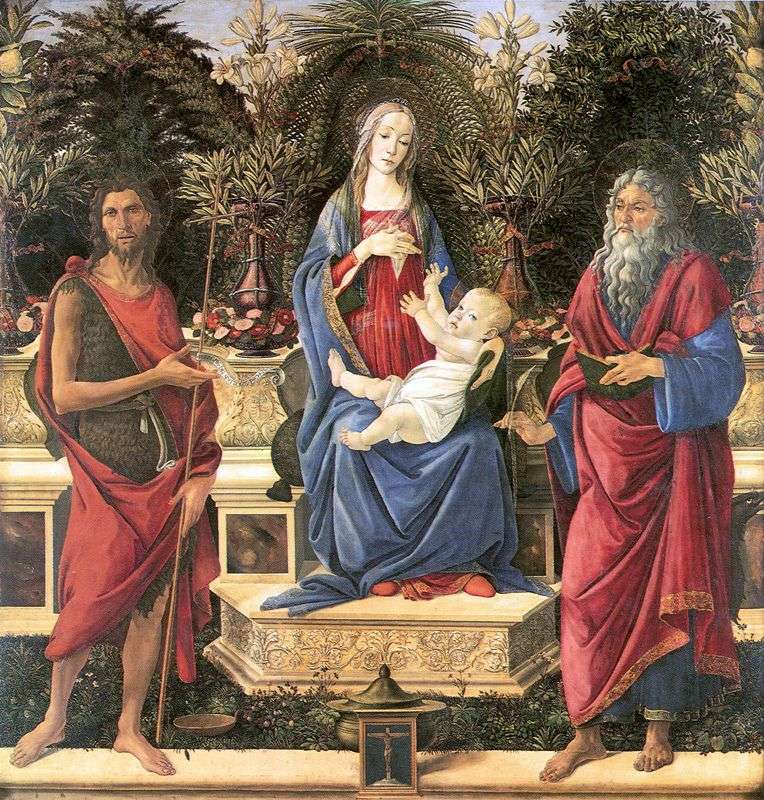 Altar of Bardi by Sandro Botticelli
Altar of Bardi by Sandro Botticelli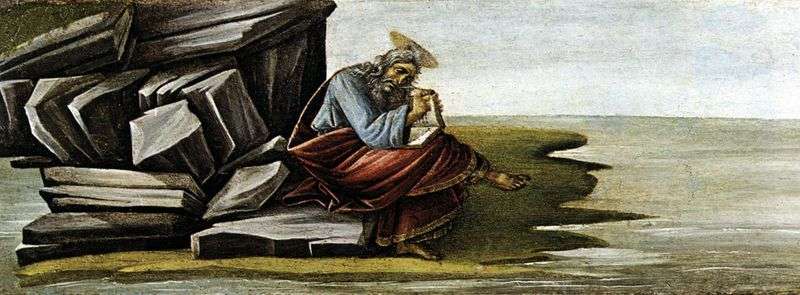 St. John the Evangelist, writing on the Pathos Book of Revelation by Sandro Botticelli
St. John the Evangelist, writing on the Pathos Book of Revelation by Sandro Botticelli